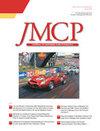An In-Home Synagis Program for RSV Prevention in High-Risk Infants
引用次数: 1
Abstract
OBJECTIVES: To evaluate and describe outcomes associated with a novel in- home administration program of respi- ratory syncytial virus (RSV) prophylaxis with palivizumab; to analyze health resource utilization and cost outcomes; and to assess parental satisfaction with in-home administration of prophy- laxis for high-risk children. DESIGN: Descriptive program evalua- tion. RESULTS: Compared with published reports of office, outpatient, or clinic- based RSV prophylaxis with palivizumab, in-home prophylaxis demonstrated low incidence of total hospitalizations (11.4% versus 14.4%) and RSV-related hospitalizations (2.3% versus 4.8%). Less than 10% of patients required an ED visit and only 1% of those were related to RSV ill- ness. Only one of the hospitalized infants required ICU admission. One- fourth of the patients experienced fever or ear infection; 43.2% devel- oped cold symptoms. In-home palivizumab prophylaxis has the potential for saving $214 per patient over drug administration and hospital- ization costs. Parental satisfaction with the in-home program was 98.6%, leading to high compliance; less than 2% of patients discontinued the program due to noncompliance. CONCLUSIONS: In-home administra- tion of palivizumab RSV prophylaxis can provide favorable outcomes, high parent satisfaction, and potential cost savings. Incidence of RSV-related hospitalizations among patients given prophylaxis at home was substantially lower than has been reported with outpatient or clinic-based prophylaxis. Compliance was excellent due to ease of administration of intramuscular palivizumab, convenience for families with multiple or premature infants or infants requiring cumbersome med- ical devices, and parents' desire to minimize the risk of exposure to RSV and other communicable diseases in clinics. Improved clinical outcomes observed with in-home prophylaxis may translate into substantial cost savings for health care purchasers.在高危婴儿中预防呼吸道合胞病毒的家庭合成计划
目的:评估和描述用帕利珠单抗预防呼吸道合胞病毒(RSV)的新型家庭给药方案的相关结果;分析卫生资源利用和成本结果;并评估家长对高危儿童家庭预防性用药的满意度。设计:描述性方案评估。结果:与已发表的办公室、门诊或基于临床的帕利珠单抗RSV预防报告相比,家庭预防显示总住院率(11.4%对14.4%)和RSV相关住院率(2.3%对4.8%)较低。不到10%的患者需要急诊科就诊,其中只有1%与呼吸道合胞病毒疾病有关。只有一名住院婴儿需要进入ICU。四分之一的患者出现发热或耳部感染;43.2%出现感冒症状。家庭帕利珠单抗预防有可能为每位患者节省214美元的药物管理和住院费用。家长对家庭项目的满意度为98.6%,依从性高;不到2%的患者因不遵守规定而终止了该计划。结论:家庭给药帕利珠单抗RSV预防可以提供良好的结果,家长满意度高,并可能节省成本。在家中进行预防的患者中,rsv相关住院的发生率大大低于门诊或基于诊所的预防。由于肌注帕利珠单抗易于给药,方便有多胎或早产儿或需要笨重医疗器械的婴儿的家庭,以及父母希望在诊所中尽量减少接触RSV和其他传染病的风险,依从性很好。通过家庭预防观察到的改善的临床结果可能转化为医疗保健购买者的大量成本节约。
本文章由计算机程序翻译,如有差异,请以英文原文为准。
求助全文
约1分钟内获得全文
求助全文

 求助内容:
求助内容: 应助结果提醒方式:
应助结果提醒方式:


